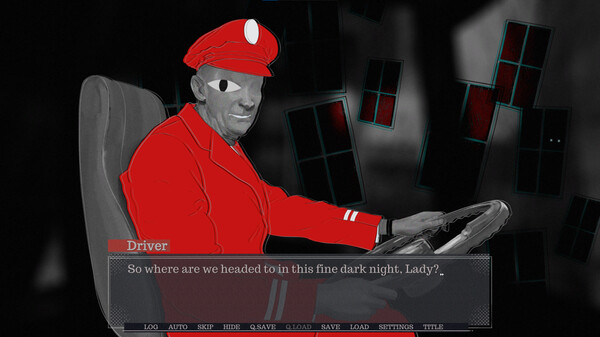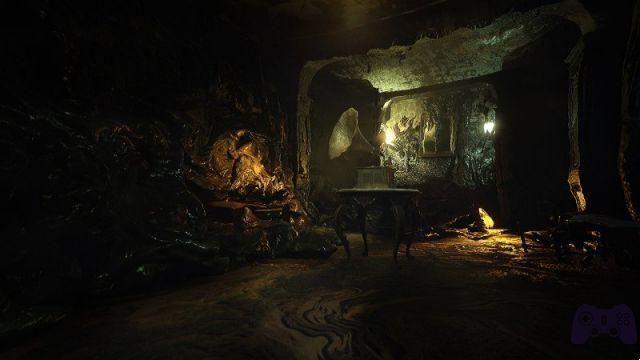"Under this mask, another mask. I will never stop taking off all these faces." This phrase by writer and artist Claude Cahun is perfect for Candelaria, protagonist of the horror visual novel I Didn't Buy This Ticket. The Brazilian developers (and publishers) of Galleon of time Its objective is to cultivate the habit of reading through video games: in this sense, I did not buy this ticket is strongly based on the dialogues and thoughts of the protagonist, and the interactions are based on choices, capable of taking us towards different endings.
I Didn't Buy This Ticket was created by Time Galleon's main narrator, Tiago Rech, and by the visual artist lirio ninotchka. A quick note: Time Galleon and the authors jointly own the copyright to the work, registered both in the name of the company and in the names of the people who actually contributed to its creation. In the world of video games it is not common to find such full recognition of the individual work of developers and artists, except in cases where self-publishing is used; It seems correct to us to highlight what is undoubtedly a protective practice towards those who created the intellectual work in question.
We tell you about Candelaria, her tears and the trip on the Eigengrau Line in ours Review of I Didn't Buy This Ticket.
From one funeral to another

Candelaria is a woman who cries for a fee on the occasion of the funeral. Similar figures were not uncommon in past centuries and were intended to demonstrate to the community that the deceased was loved and deeply mourned by his fellow citizens. Candelaria, however, does all this as a hobby, traveling from one place to another on foot or by bus, discovering one day that she is carrying a ticket in her pocket that she never bought: just to escape from the relatives of the deceased, who often find her. Trapped in complicated conversations and forced to remember her past, Candelaria is also willing to use a mysterious and disturbing note.
I did not buy this ticket, it never hides its surreal vein and Candelaria's trips by bus single gray line They are full of absurd and disturbing characters: a disembodied mouth, a man with a face full of teeth, a conductor who obsessively asks for his ticket. "Eingengrau", "gray properly speaking", is the color that the human eye sees in the absence of light and, in a sense, all the passengers on the bus are waiting for illumination, a turning point that draws from their past to guide them. towards a different future. Candelaria is forced to face the traumas of his life, and the dialogue choices the player makes will give direction to her journey, taking her toward different endings, anchored in the options selected by the player and how these lead Candelaria to face a mysterious call she keeps receiving on her cell phone. , but to which she, at least initially, categorically refuses to respond.
The idea of crying as a performance under order, related to the Candelaria experience, is capable of provoking deep reflections in the players and pushing them to experience all possible sides of a story, undoubtedly short (I did not buy this ticket, it can be completed in about an hour), but very deep. It is a story that speaks of the value that society gives to appearances, more than to the substance; of the ability we have to change our faces depending on situations; of others' expectations of us and how these, in the long term, can transform us into a different being, often no better than we were at the beginning. The face of Candelaria, Balanced between the essence and the vision of others., between being and being-seen, is the perfect symbol of this enigmatic and endless journey.
Terrible visions

the artist's work lirio ninotchka - which is trying a video game for the first time - seems to come from another distant dimension, anchored in surrealist painting and in some visions of Central European silent cinema from the beginning of the XNUMXth century. The characters are marked by voluminous eyes, often out of place, to symbolize society's obsessive scrutiny of the individual's behavior; Sometimes it veers decidedly towards terror, which is aided by sound effects capable of giving goosebumps.
I did not buy this ticket è, in general line, a'Contained and very refined experience., and even the recurring visual choices (the always identical bus interiors, the more or less identical setting of each funeral) fit well into the narrative and design choices made by Rech and Ninotchka. We find that the branches to reach the different endings are not always clear, but this is an aspect that does not affect the enjoyment of the experience, which has its own meaning and closure even if it is completed only once. We would like to point out the absence, for the moment, of a Spanish translation; We played I Did Not Buy This Ticket in English.
Conclusions
Tested version PC with Windows digital delivery Steam Price 5.99 ps Holygamerz.com 8.0 Readers (7) 7.8 your voteI did not buy this ticket based on absolutely original narrative premises for a video game work: Candelaria, a woman who mourns her dead as a hobby, is a memorable character in the sense that she is a singularity, an anomaly, an always changing face reflected in a mirror The video game developed by Tiago Rech and Lírio Ninotchka is capable of making the player reflect on complex issues, such as identity and the completely subjective approach to grief. We found the presence of different narrative turns in the adventure interesting, although it is not always easy to trace the nodal point that takes the story in one direction or another.
PRO
- Really fascinating art direction.
- An atypical and original story
- Candelaria is a memorable character.
AGAINST
- The points that lead to narrative turning points are not always easily identifiable.






